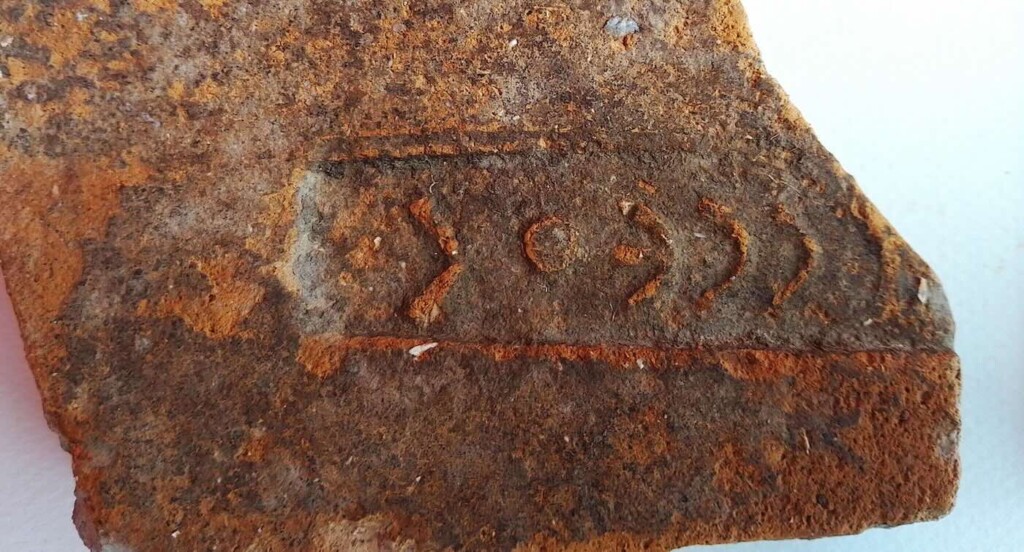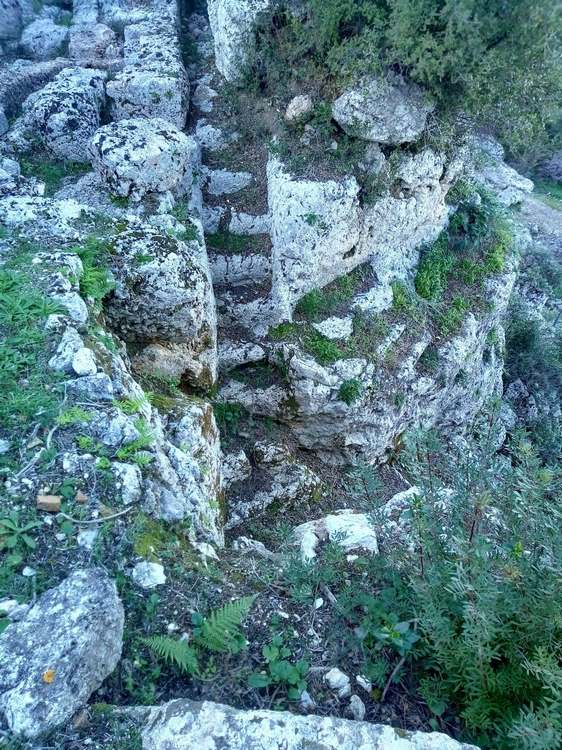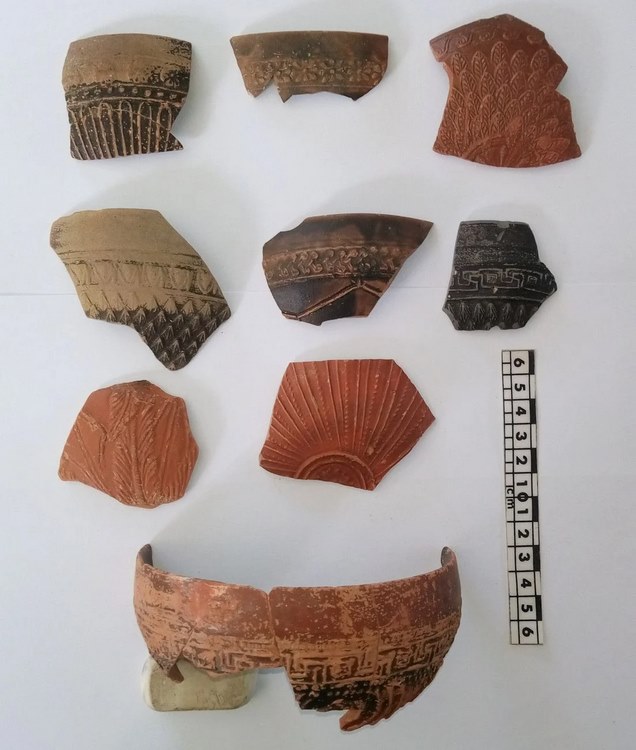 Tile Stamped with Odysseus from 13th century BC found on Ithaca – Credit: Χρ. Μαραμπέα (Christina Marampea) / Greek Ministry of Culture
Tile Stamped with Odysseus from 13th century BC found on Ithaca – Credit: Χρ. Μαραμπέα (Christina Marampea) / Greek Ministry of CultureAs is so often the case in Greek history, real events merge with myth—and there’s no more perfect example than the island of Ithaca, renowned as the homeland of ‘Odysseus’ the hero king in Homer’s epic poem, The Odyssey.
Now, at an archeological dig there, tiles bearing the name of Odysseus have been found, confirming the location of a long-theorized site where followers carried out hero worship for the semi-mythical king.
The only character to feature prominently in both of Homer’s epics, The Iliad and The Odyssey, Odysseus fought in the Trojan War as the king of Ithaca before embarking on a perilous journey home that took 10 years, during which he encounters terrifying monsters, temptation, and challenges.
In the northern part of the real-life island, at an ancient fortified settlement known colloquially as the School of Homer, or Agios Athanasios, an excavation overseen by the University of Ioannina and led by Professor Yiannos G. Lolos and Dr. Christina Marabea have turned up new findings that have rooted Odysseus firmly in the landscape.
Situated on the eastern slopes of a town called Exogi, a large outcrop of rocks surrounded by natural springs is linked by two rock-carved staircases. A Hellenistic age tower (3rd – 2nd century BCE) crowns the upper outcrop, while a large rectangular building dominates the area at the bottom of the staircases.
 Credit: Χρ. Μαραμπέα (Christina Marampea) / Greek Ministry of Culture
Credit: Χρ. Μαραμπέα (Christina Marampea) / Greek Ministry of CulturePrevious excavations had identified human activity from various ages, such as the late-Neolithic and Hellenistic, but Lolos and Marabea’s new discoveries place the School of Homer also squarely in the Mycenaean period (from 1600 to 1100 BCE)—the time in which the Odyssey and Iliad are set.
Pottery fragments from 30 different vases dating to between the 14th and 13th centuries BCE were found in and around a large underground cistern (a covered water storage basin), hewn in the sides of the earth and supported by large distinctive boulders.
Scholars suggest that this settlement was likely used to oversee nearby port access and secure water rights for distribution to the various sailors coming and going, as well as agricultural lands nearby.
FROM THE TIME OF HOMER: Greek Archaeologists Use The Iliad as a Map to Find 10 Ancient Shipwrecks
 Credit: Χρ. Μαραμπέα (Christina Marampea) / Greek Ministry of Culture
Credit: Χρ. Μαραμπέα (Christina Marampea) / Greek Ministry of CultureOver 100 artifacts of pottery, coins, jewelry, and other items meanwhile date to the more recent Hellenistic age among which were tiles found to be stamped with some very interesting inscriptions. The first was “ΔΗ” — a common abbreviation for demosia, or “public” while others refer to Apollo. So it appears that during Alexander of Macedon’s time, the School of Homer had switched business from water provision to public worship.
Then, more tiles were found bearing the inscriptions “ΟΔΥCCEOC and ΟΔΥC[CEI],” or Odysseus in two different verb tenses, with the latter possibly being a dedicational form.
The team and affiliated scholars now believe the Agios Athanasios is the site of the Odysseion—the center of a cult of hero worship for the Homeric king of Ithaca. References to this religious complex have been found, for example, in Magnesia in Asia Minor, dating to 207 BCE and which include mention of the Odysseia, a series of Olympic-style games held in his honor.
MORE ANCIENT GREEK DISCOVERIES: How a Chatty Motorist Led to One of the Biggest Finds in Greek Archaeology–the Lost 2,800-year-old Temple of Artemis
The Hellenistic age was filled with hero worship, and the conqueror Alexander himself idolized a Homeric icon, Achilles.
Furthermore, Roman-era discoveries at the Agios Athanasios included a miniature bronze bust depicting Odysseus with a huge beard in the Greco-Roman style, solidifying the idea that it was a center of Odysseus worship.
SHARE This Wild Collision Between Myth And Fact With Your Friends…
Source link

